The Ultimate Travel Guide to Buddha Temple Ba Nam Hai in Bac Lieu
As a psychologically appealing tourist spot, the Buddha Temple Ba Nam Hai in Bac Lieu is known to both locals and people from other countries. People come in large numbers to pay their respects on holy days like the full moon, the first of the month, and during the Tet holidays. For more information on this pagoda's secrets, let's go on an adventure with Vietnam Budget Car Rental.
>>Read more:
General information about Buddha Temple Ba Nam Hai in Bac Lieu
Address: Bờ Tây Hamlet, Nha Mat Ward, Bac Lieu City
The temple called Quan Am Pagoda is in the Nha Mat Ward of Bac Lieu City. It is a Northern Buddhist temple and is located on the eastern coastal wall. There are Buddhist symbols and colours all over this spiritual tourist spot, which brings many locals and Buddhists from all over the world to pay their thanks.
If you visit this temple, you can look up at the 11-meter-tall figure of Bodhisattva Quan Am, whose calm eyes are fixed on the sea. You'll also hear the sacred story about Bodhisattva Quan Am, who is sometimes called Mother Nam Hai and helps and protects the fishers in this area.
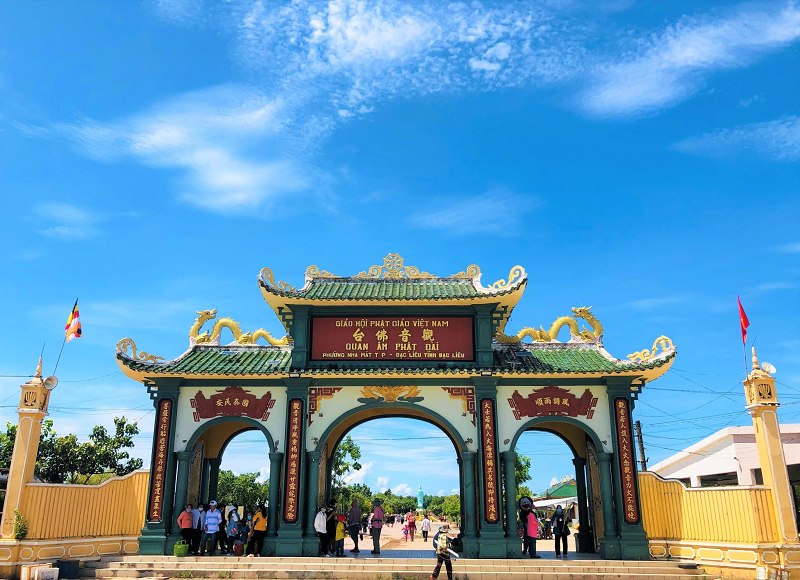
How do you get to Buddha Temple Ba Nam Hai in Bac Lieu?
On the Ca Mau Peninsula, Bac Lieu Province is on the coast of the Mekong Delta. It is about 267 km by car from Ho Chi Minh. To get from Ho Chi Minh to your destination by bus, you can pick a respected company like Phuong Trang or Thanh Buoi. Tickets cost between 130,000VND and 250,000VND, depending on the type of vehicle and seat picked.
If people want to rent a private car from Ho Chi Minh to Bac Lieu, they should take National Highway 1A, which goes through Tiền Giang and Vĩnh Long provinces and is easier and safer than the other routes. Finally, go to Nhà Mát Ward and see the well-known Quan Am Nam Hai Pagoda. It doesn't take too long to get from downtown Bac Lieu City to the pagoda—about 12 km.
The Construction History of Buddha Temple Ba Nam Hai in Bac Lieu
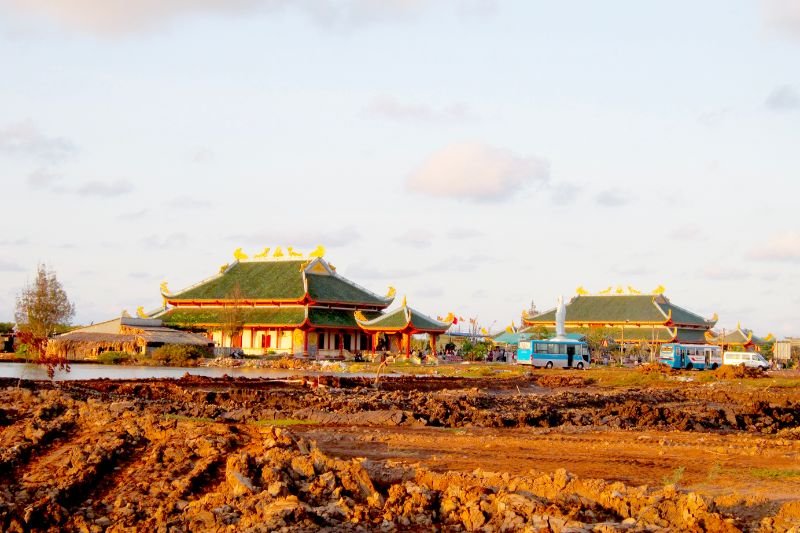
The Buddha Temple Ba Nam Hai in Bac Lieu (Quan Am Phat Dai) used to be just a simple house made of leaves on a small plot of land by the water. Around the area were ponds, swamps, and mudflats with lots of mangrove and sedge trees.
The temple started building the Quan The Am figure in 1973, with the help of Most Venerable Thich Tri Duc. The statue stands 11 metres tall, not counting its base. In 2004, the provincial government of Bac Lieu started to reclaim the land where the temple stood, making it about 3 hectares bigger.
Several buildings were built on the temple grounds over time with help from locals and Buddhists. These include the triple gate, the sky gate, the boundary wall, Thien Phu Palace, Dia Tang Palace, and others.
Things to explore at Buddha Temple Ba Nam Hai in Bac Lieu
1. Legend of Quan Am Nam Hai
Who is Bac Lieu's Mother Nam Hai? This name has a lengthy history with the legend of Quan Am Bodhisattva. According to legend, Quan Am Nam Hai was formerly King Dieu Trang's third daughter. She suffered and was tormented because her father, the monarch, was violently opposed to her Buddhist devotion. He ordered the destruction of a temple and kidnapped her for execution.
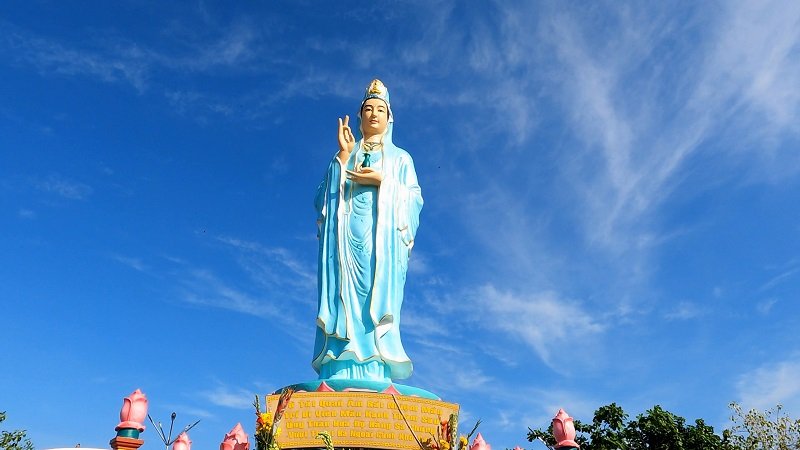
Yama (the King of Hell) escorted her through the gates of anguish as her spirit left her body. It was her own great spiritual strength that allowed the wandering souls to find salvation there. Yama was given the task of returning her spirit to the mortal realm. When she recovered consciousness, the Buddha recommended her travel to Huong Tich Pagoda for training. She reached enlightenment and was given the title of Quan Am Nam Hai after years of work.
Mother Nam Hai is revered in many Asian temples for her prayers and good fortune. When worshippers bow before her statue, they feel safe and understood.
2. Structure of Buddha Temple Ba Nam Hai in Bac Lieu
The Buddha Temple Ba Nam Hai in Bac Lieu has a large space with nice sea breezes. Visitors will face the sky gate after passing through the triple gate, followed by the spectacular Hang Long - Phuc Ho Screen and a 49-meter-high flagpole. The temple is well-designed, with the Quan Am Bodhisattva statue atop a lotus seat in the centre. The Phuc Ho Screen and 32 incarnations of Bodhisattvas stand in front of the ceremonial yard. Thien Phu Palace and Dia Tang Palace are on either side.
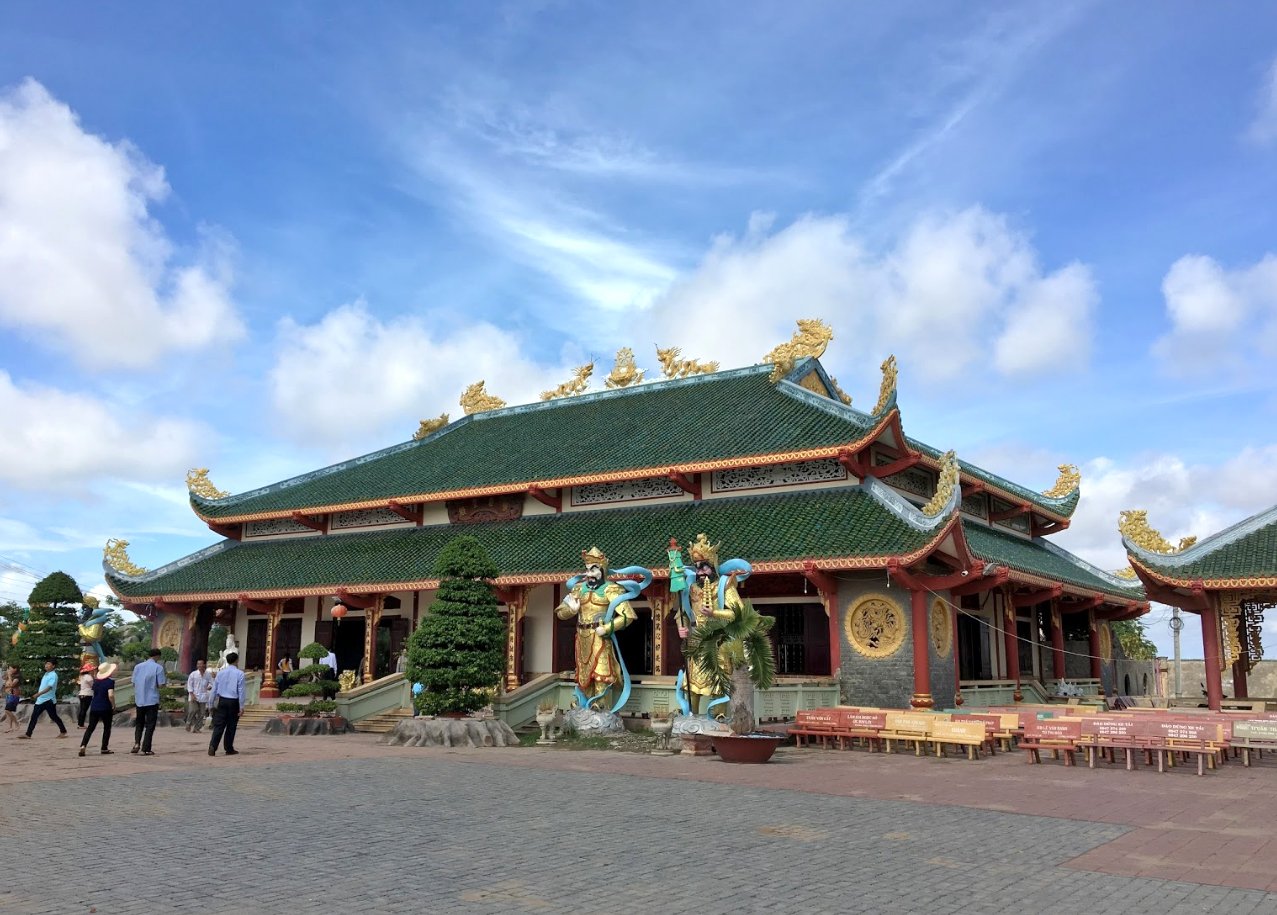
Thien Thu Quan Am, one of the titles of Quan The Am Bodhisattva, is worshipped in the Thien Phu Palace. This statue of a Bodhisattva features a celestial countenance, a thousand arms, and a thousand eyes. Meanwhile, the Dia Tang Palace is devoted to the Dia Tang Bodhisattva, who rescues beings from Hell. Both primary shrines have statues of Quan The Am Bodhisattva, King Yama Bodhisattva, Earth Store Bodhisattva, and other deities.
The Quan Am Palace, which is located to the left of the Mother Nam Hai statue when viewed from within the gate, features grand traditional Vietnamese architectural characteristics, from the column-supported structure to the two-tiered green-tiled roof.
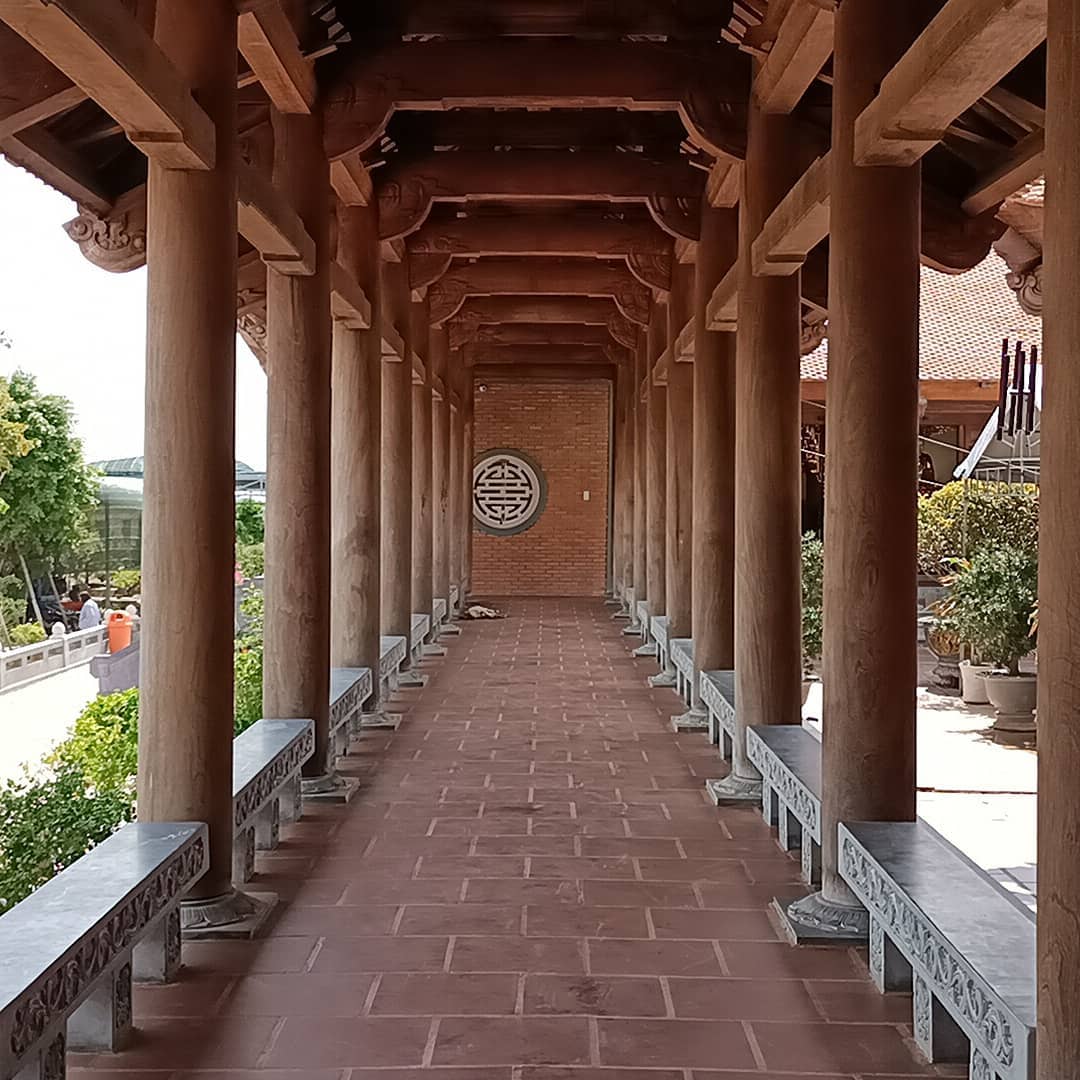
In addition, the Quan Am Mountain is located within the temple grounds, just in front of the Mother Nam Hai monument. This structure is built in Buddhist style, with a hollowed-out mountain acting as a hall and scenes from the Flower Adornment Sutra on Mount Gridhrakuta in India, where 84 Bodhisattvas listen to the pleas of beings seeking salvation.
3. Quan The Am Bodhisattva Statue
The massive Quan The Am Bodhisattva statue was built in 1973 and finished by 1975, servicing the religious requirements of the local people, particularly the fisherman in the area. The statue was originally placed near the sea, and during high tides, water swamped its base. Natural sedimentation has relocated the statue's site almost 1km inland over the years. Because of its magnificent 11-meter height, this tower facing the sea has become a "beacon" for vessels fishing far offshore.
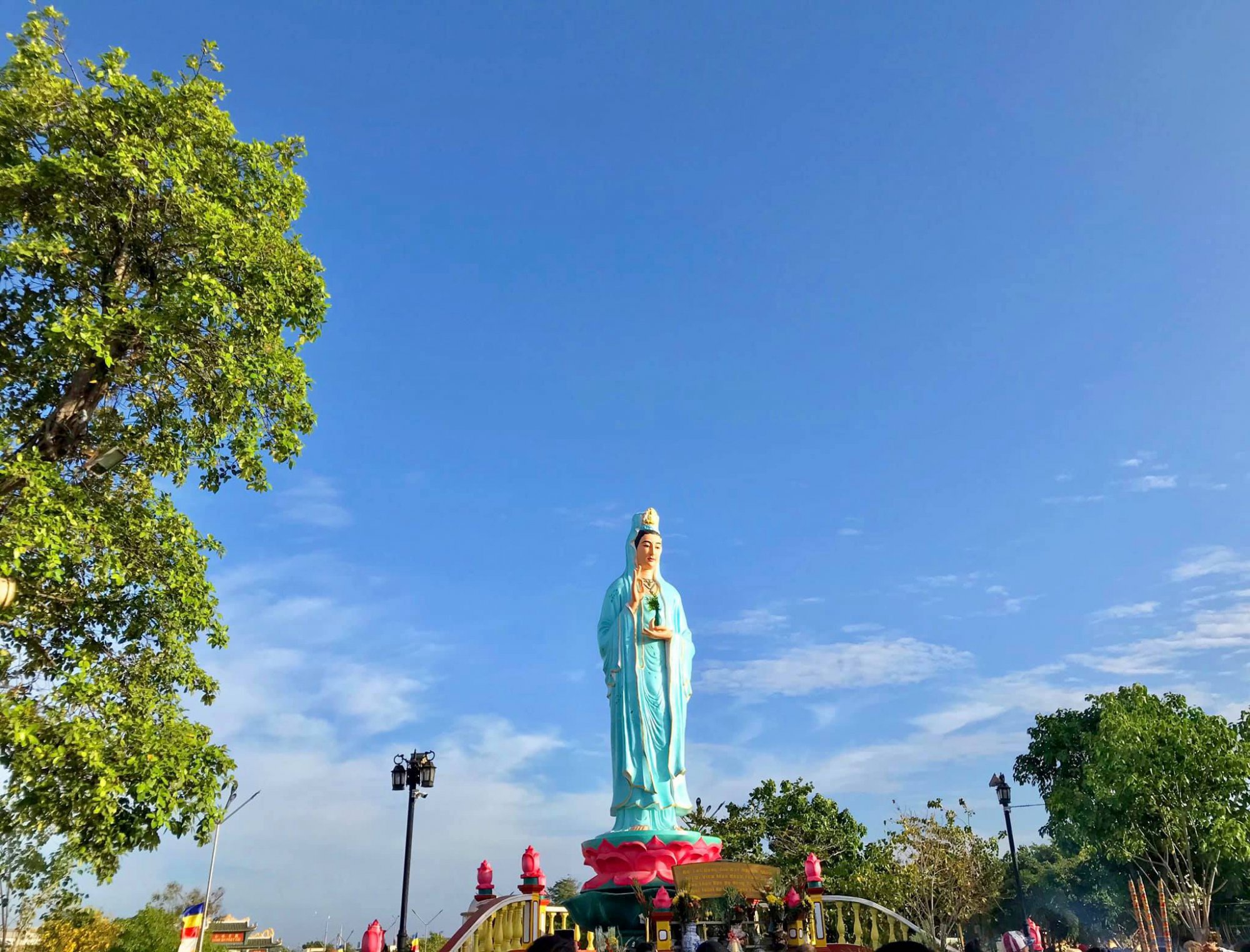
Mother Quan The Am (or Mother Nam Hai) is regarded in the local community as the one who listens to anguish, alleviates sorrow, and protects people, whether on land or at sea. The image of Quan The Am Bodhisattva carrying a vase of nectar not only inspires but also instills trust in limitless compassion and salvation, bringing courage and perseverance in the face of adversity.
4. Unique Events and Festivals at Quan Am Phat Dai Pagoda
Every year, on March 22nd, 23rd, and 24th of the lunar calendar, the temple hosts the Quan Am Nam Hai Festival for three days. This is one of six important events in Bac Lieu Province that have been officially recognised by the Department of Culture, Sports, and Tourism. During these days, the temple transforms into a joyous gathering place for Buddhists, monks, nuns, and tourists to enjoy activities such as preaching, flower offerings, lion and dragon dances, cultural performances, and opening ceremonies.
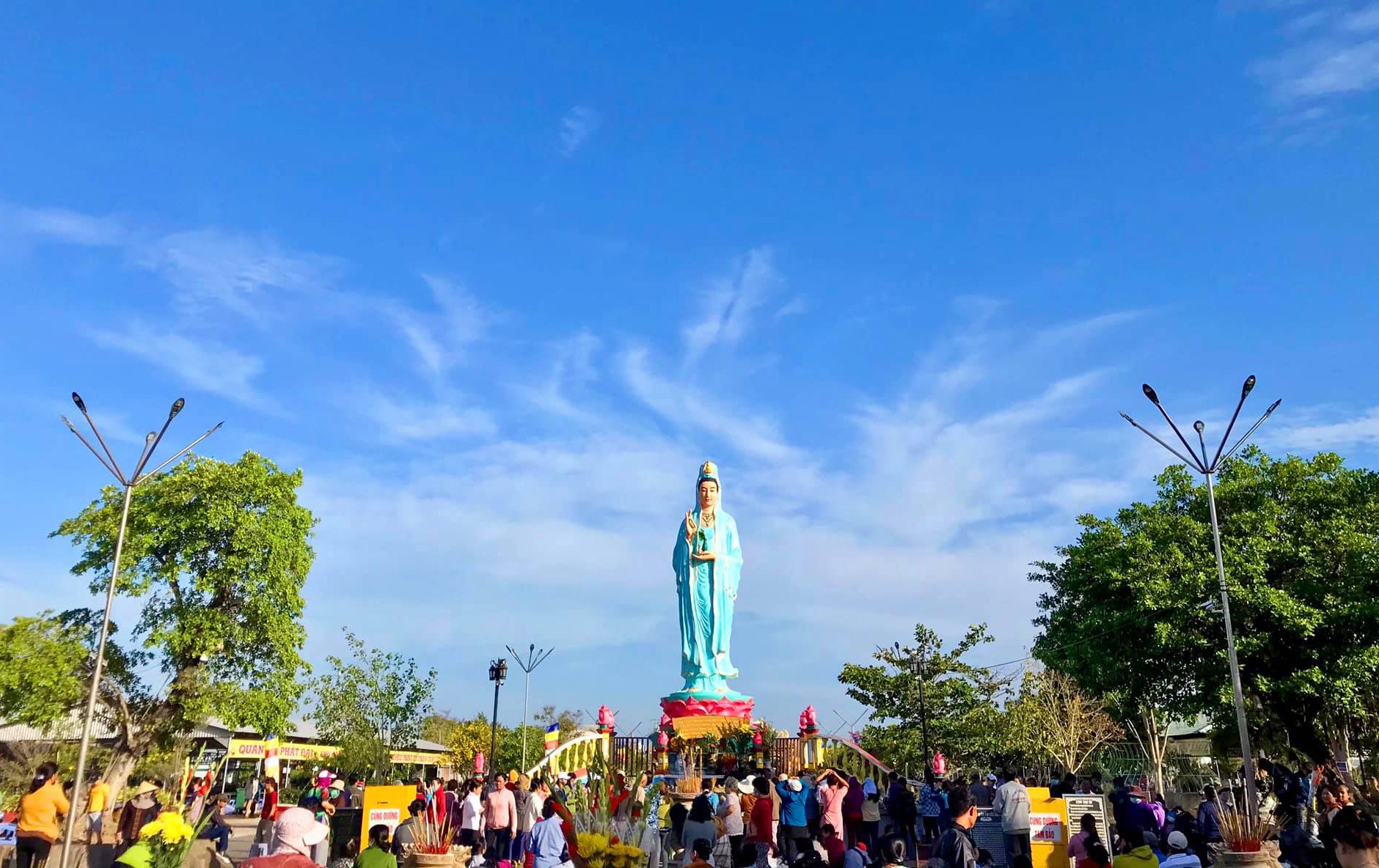
Furthermore, the temple hosts important events such as Quan The Am Bodhisattva's observance days on February 19th (birth), June (enlightenment), and September (ordination), as well as the Tet holiday, Vu Lan Festival, and others. These spiritual rituals within Quan Am Phat Dai Pagoda add greatly to the cultural richness and serve as important tourism highlights in Bac Lieu.
Exploring other tourist destinations in Bac Lieu

Aside from the Quan Am Nam Hai Pagoda in Bac Lieu, make sure to check out the list of other prominent Bac Lieu attractions. To begin with, one of the most current and renowned spots to visit is the Wind Farm in Bac Lieu, which is a popular spot for young people to shoot photos and take fantastic selfies.
The Nha Mat Amusement Park follows, with gorgeous sceneries and a plenty of good food, particularly fresh seafood, awaiting your sampling. There are other notable landmarks like as the century-old Cong Tu Bac Lieu House and the unusual architecture of the Cao Van Lau Theatre.
If you have the opportunity, do not pass up the opportunity to visit the Buddha Temple Ba Nam Hai in Bac Lieu. Take the time to pilgrimage and explore this region, where you'll genuinely feel the spiritual and cultural splendour on your journey to one of Bac Lieu's most popular tourist destinations.
